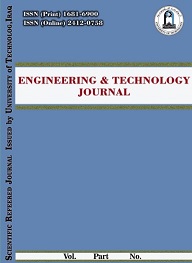Abstract
The human hand presents the source for a numerous of physiological biometric
features, from these are palmprint, hand geometry, finger geometry and the vein pattern on
the dorsum of the hand, are mostly used in many fields for different applications. Lines and
points are extracted from palms for individual identification in original image or frequency
space. In this paper, a preprocessing to extract the central part from the input palmprint
image, next a 2-D multi-wavelet transform is used to convert the palmprint image into 16
sub-bands, and the texture feature vectors, energy and entropy for each of the 16 sub-bands
is computed and normalized with min-max method for individual identification. The
correlation distance is used as a similarity measure. The experimental results point up the
effectiveness of a method in either using low resolution or noisy images
features, from these are palmprint, hand geometry, finger geometry and the vein pattern on
the dorsum of the hand, are mostly used in many fields for different applications. Lines and
points are extracted from palms for individual identification in original image or frequency
space. In this paper, a preprocessing to extract the central part from the input palmprint
image, next a 2-D multi-wavelet transform is used to convert the palmprint image into 16
sub-bands, and the texture feature vectors, energy and entropy for each of the 16 sub-bands
is computed and normalized with min-max method for individual identification. The
correlation distance is used as a similarity measure. The experimental results point up the
effectiveness of a method in either using low resolution or noisy images
